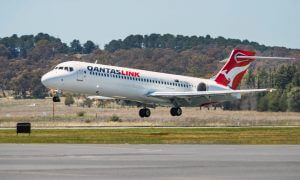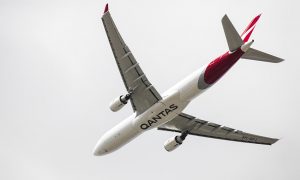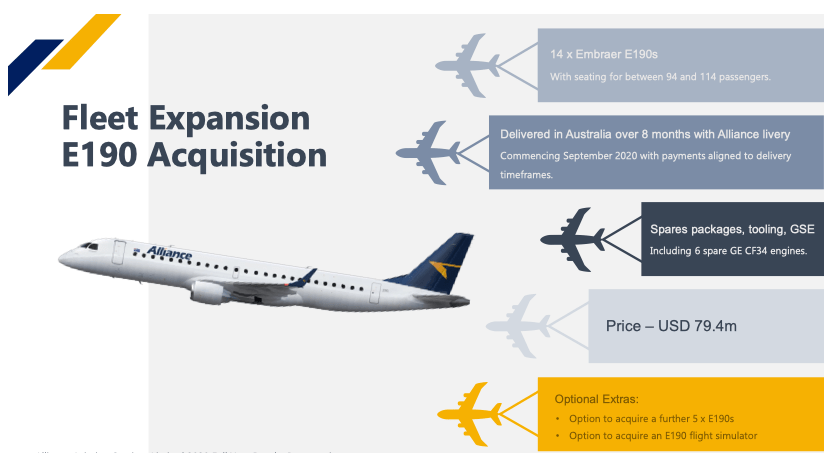Share Tweet Share Share Email Comments
A new deal with Alliance Airlines will help the Qantas Group meet an expected surge in local tourism demand once the country moves beyond sudden COVID-related border closures.
Alliance will provide the QantasLink network with flexible capacity using its recently acquired Embraer E190 aircraft, a 94 seat jet with a five-hour range that is well suited to linking regional centres with smaller capital cities.
Initial routes that Alliance will fly are expected to include Adelaide–Alice Springs, Darwin–Alice Springs, and Darwin–Adelaide. Passengers can expect an increase in frequency made possible by the size, range, and economics of the E190 compared to the Boeing 737s that are currently used on these routes; the 737s will be redeployed elsewhere in Australia as part an ongoing ‘right aircraft, right route’ approach to the Group’s network.
Qantas has signed a three year deal with Alliance to access three E190s based in Darwin and Adelaide. The timing will depend on the rate of recovery in travel demand but is currently expected to start in June 2021, once the vast majority of the Qantas Domestic flying has returned to pre-COVID levels.
The agreement also provides flexibility to access an additional 11 (for a total of 14) E190 regional jets but also to switch off some (or all) of this capacity, depending on market conditions.
CEO of QantasLink, John Gissing, said the deal reflected the kind of flexibility needed to respond to opportunities without committing any capital.
“We know this current climate of snap border closures will pass and we want to be ready for the recovery and for what is a structurally different market to what we had pre-COVID,” said Mr Gissing.
“The ability to switch on extra capacity with Alliance will help us make the most of opportunities in a highly competitive environment and having the right aircraft on the right route helps us deliver the schedule and network that customers want.
“The E190 is a perfect mid-size regional jet for routes like these ones in northern Australia. It has longer range than our 717s and it’s about half the size of our 737s, which means the economics work well on longer flights between cities and towns outside of the top five population centres.
“Instead of one or two flights a day with a larger aircraft, we can offer three or four flights a day on the E190, which gives customers in these cities a lot more choice about when they travel.
“We’ve worked with Alliance for many years and they have flown literally thousands of flights for Qantas over that time, with the same service and standards that customers expect when they buy a Qantas ticket.
“By the time we switch on this extra capacity with Alliance, we expect all of our own domestic crews will have already returned to flying.
“The 737s that we currently use on these routes will move to other parts of our network. We’ve already opened up 20 new city pairs with our existing fleet as more people holiday at home, so there are a lot of possibilities once we get past this cycle of sudden border closures.
“Importantly, Alliance is keen to provide the opportunity for our international pilots and cabin crew to operate the E190s given it will be some time before overseas markets fully recover,” added Mr Gissing.
The E190 offers 10 seats in Business Class and 84 seats in Economy, with a range of about 4,500 kilometres.
Qantas owns just under 20 per cent of Alliance Airlines.
Related Items:Alliance Airlines, Qantas Share Tweet Share Share EmailRecommended for you
-

 Qantas to Outsource Ground Handling Operations at 10 Airports Across Australia
Qantas to Outsource Ground Handling Operations at 10 Airports Across Australia -

 Qantas Adds Three New Routes From Canberra
Qantas Adds Three New Routes From Canberra -

 Qantas International CEO to Leave the Group
Qantas International CEO to Leave the Group
Click to comment
Leave a Reply
Your email address will not be published. Required fields are marked *
Comment
Email *
Website
Yes, add me to your mailing list

